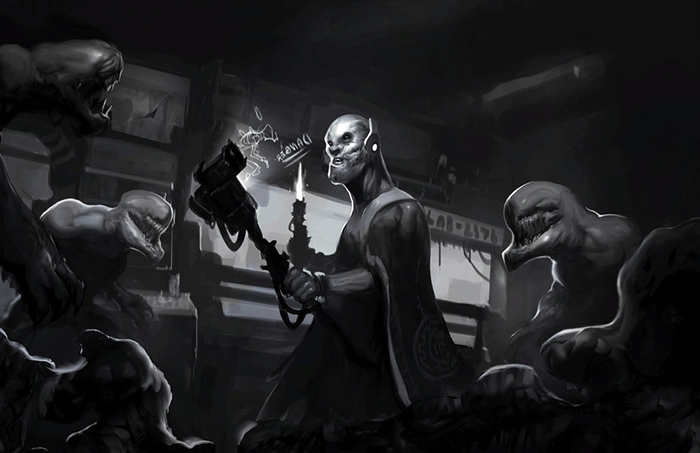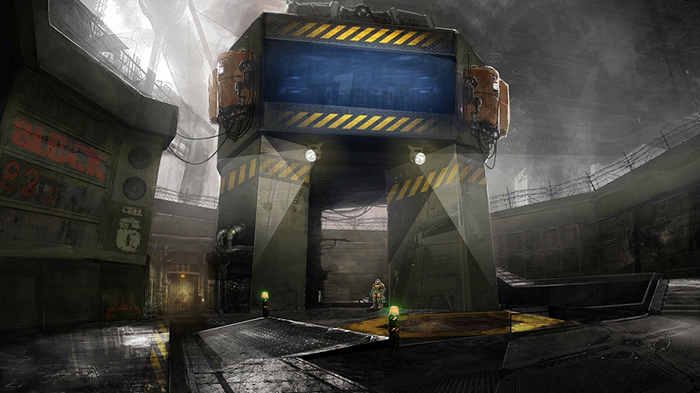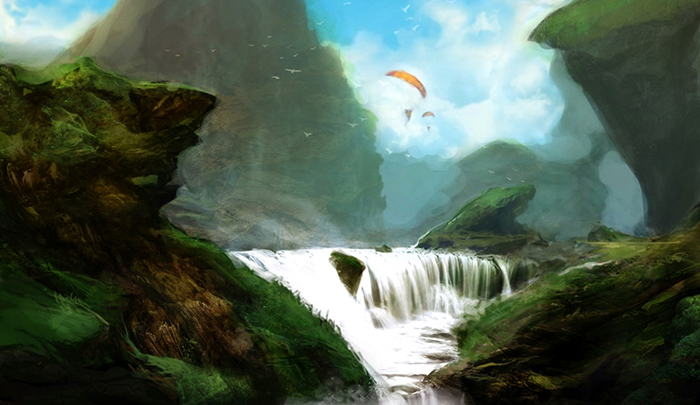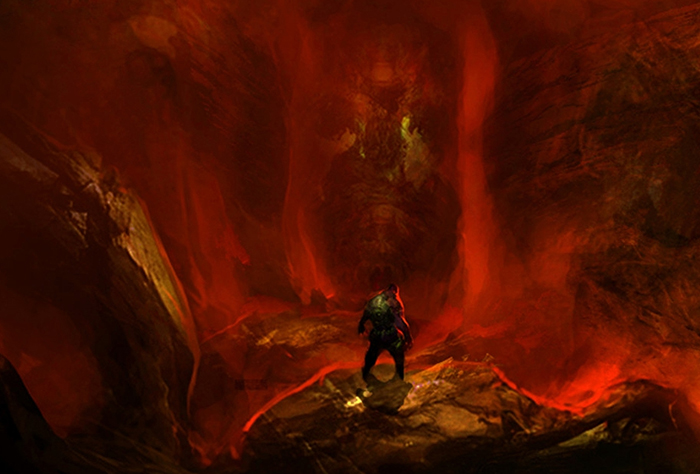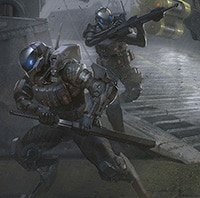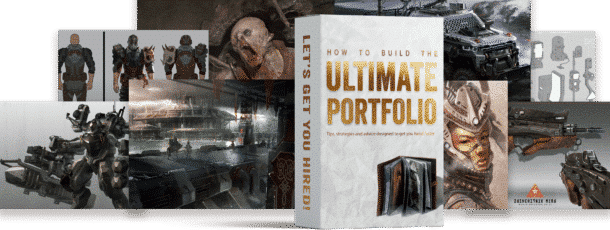David Mitchell is currently a freelance artist, specializing in illustration and conceptual design.
Professional Portfolio: http://applecrow.carbonmade.com/
Support David on Patreon
Education background:
- The Art Institute of Dallas, Dallas, TX
Applied Arts and Computer Animation, 2003-2007
- The Art Institute of Washington, Arlington, VA
Media Arts and Animation, 2002-2003
Shipped Titles / Projects Worked On:
– Teddy Tumble (D7 Games), Burnstar (Nerve Software), Call of Duty: Black Ops 2 (Nerve Software), Aliens: Colonial Marines (Nerve Software)
Current portfolio examples:
In this first part of the interview, we asked David Mitchell specific questions about what it’s like to be a concept artist in the entertainment industry, dispel a few common misconceptions that aspiring artists tend to have about the field, and more. Here’s what he had to say:
HOW OLD WERE YOU WHEN YOU DECIDED TO COMMIT TO BEING AN ARTIST? WHAT WERE YOUR MOTIVATIONS/ INSPIRATIONS?
I was about 18 years old when I found art to be what I wanted to do professionally. It’s always been a hobby, but mostly a sidenote to my love for writing up until that point. My motivation however, really began with reading. I used to collect a lot of pocket paperbacks novels that I could carry around in my bag. They always had such fantastic art on the covers. I would often tear off the covers of the ones I read and carried them around with me. My favorites were the Edgar Rice Burroughs Tarzan and Martian Tales covers, but mainly anything done by Frank Frazetta, or anything that resembled his work that I could find. I’m an avid alien creature space adventure enthusiast when it comes to my reading and my art. Whenever I would write I’d take them out and just look at them from time to time since it gave me inspiration for the stories and characters I wanted to make. After a while I started drawing more than I was writing or reading, and art became something I couldn’t go without for a single day. That’s what led me to go to art school, and from there it has been a constant and increasingly addictive journey in creativity, fun, and thankfully some lucrative experiences and opportunities.
WHAT DO YOU LIKE MOST ABOUT YOUR JOB? WHAT DO YOU FEEL ARE THE BIGGEST CHALLENGES?
Working freelance is a lot of fun, and I love that I have more control over what I create and how I create it. I feel that freedom is what I enjoy most about it. Eventually I look to get into a film studio or another game studio where I can be a part of much larger teams and projects. I prefer working on a team of creative minds to make something more than I can do on my own. That however is among the greater challenges for me as an artist. Struggling with the want to be part of a team all working toward a goal, and the reality of that not always being as free or creative as I’d like. That being said, the challenges of freelance work for me are mainly in time management. Working without many constrictions on projects makes it very easy to go beyond the scope of what you need, making the project or illustration too big and time consuming for its purpose.
ARE THERE ANY MISCONCEPTIONS YOU THINK STUDENTS TEND TO HAVE ABOUT CONCEPT ART AND ILLUSTRATION, THAT YOU WISH TO SET STRAIGHT?
Well, I remember early on thinking that concept art was all about making crazy cool characters and environments all day. That is certainly a part of it, but I had no concept of the nature of what I’d be making most of the time. Concept design is more about creating function and visual language. There’s a lot of repetition and recreation. I would say that is one misconception I’d like to put out there.
It’s not just about making things look pretty. It’s about making things work so that the guy who’s going to model your design can understand what it is.
I’d like to think that with the exposure to so many online workshops and social media bringing artists so close to the industry pros they want to become, that this type of misconception isn’t as common…but you never know.
CAN YOU SHARE A PERSONAL STORY, ABOUT A HARD LESSON THAT YOU LEARNED THAT COULD HAVE BEEN AVOIDED, HAD YOU BEEN BETTER INFORMED?
Probably the hardest lesson I have learned over the last few years is that concept art is mentally very draining, more so than I ever thought it would be. After all, I spent hours on hours drawing all the time when I was in school even more after I got home, and never had an issue.
I didn’t know what mental fatigue really was as an artist. Having to think out and inside of the box all the time and still stay unique and fresh in your designs can wear on you.
For me it was quite depressing, and I hit a point where I just wasn’t creating or thinking on target and it seemed like I couldn’t say on paper what I was saying in my head. The amount of creativity required to do those things day in and day out for months, without any type of relaxation or focus on something unrelated resulted in me getting burned out mentally. I learned the rough way that it was more efficient for me to have other means of focus for my brain every once in a while. Play sports, take dance lesson, lol. Do something to get your brain out of work mode for a time. For me its very much like lifting weights to work out. You don’t want to work out the same muscles non-stop day after day, you’ll hurt yourself. You work them, then you give them a break, and then you work em again.
This concludes Part 1 of our interview with David Mitchell. In Part Two, we discuss with David his Dos and DONTs of portfolio building, how he branded and marketed himself in the beginning, and much more. All images used with permission by the artist. ©David Mitchell

